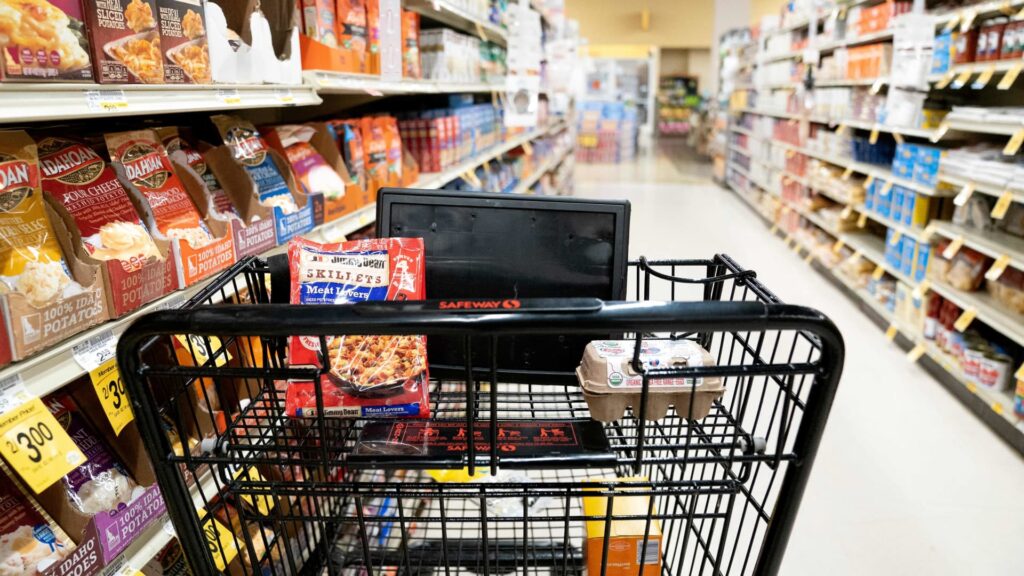A grocery cart sits in an aisle at a grocery store in Washington, DC, on February 15, 2023.
Stefani Reynolds | AFP | Getty Images
It was a year ago this month that the Federal Reserve launched its first attack against inflation that had been percolating in the U.S. economy for at least the previous year.
That first strike, in retrospect, would seem timid: Just a quarter percentage point increase to tackle price surges which in just a few months would peak at their highest annual rate since late 1981. It wouldn’t be long before policymakers knew that initial step wouldn’t be enough.
Subsequent months saw much larger hikes, enough to raise the Fed’s benchmark borrowing rate by 4.5 percentage points to its highest since 2007.
So after a year of inflation fighting, how are things going?
In short, OK, but not a whole lot more.
The rate hikes appeared to have quelled some of the inflation surge that inspired the policy tightening. But the notion that the Fed was too late to get started lingers, and questions are increasing over how long it will take the central bank to get back to its 2% inflation standard.
“They have a ways to go,” said Quincy Krosby, chief global strategist for LPL Financial. “It took them a long time to acknowledge that inflation was stickier than they initially assessed.”
Indeed, Fed officials for months stuck to the narrative that inflation was “transitory” and would abate on its own. In the interim, prices soared, wages increased but failed to keep up, and central bankers were left with a public impression that they were asleep at the switch while an economic crisis raged.
A Gallup poll in late 2022 showed that just 37% of the public had a favorable impression of the Fed, which not so long ago was one of the most trusted public agencies around.
“This is not to criticize them, but to understand: They do not know more about inflation than the average consumer. That’s important,” Krosby said. “It’s just that, it’s their job to know. And that’s where the…
Read the full article here





